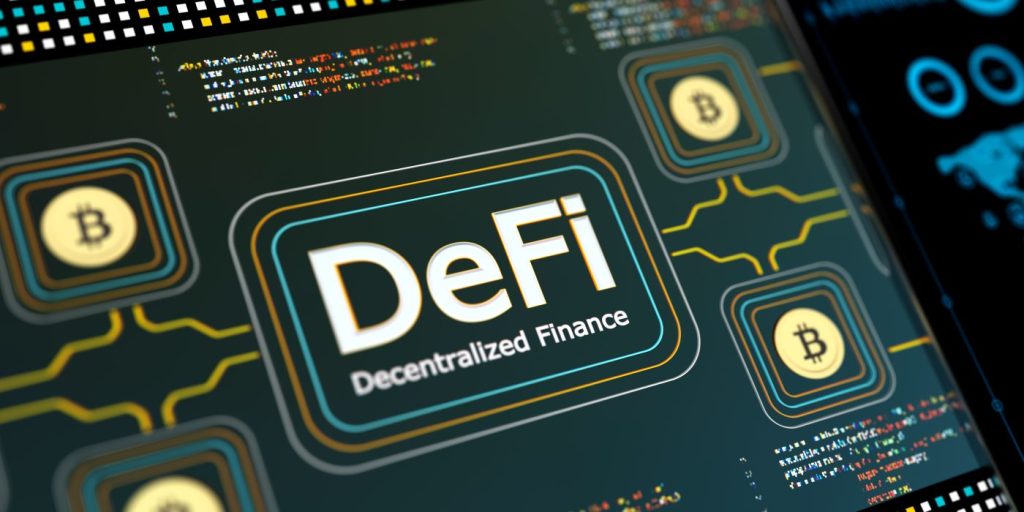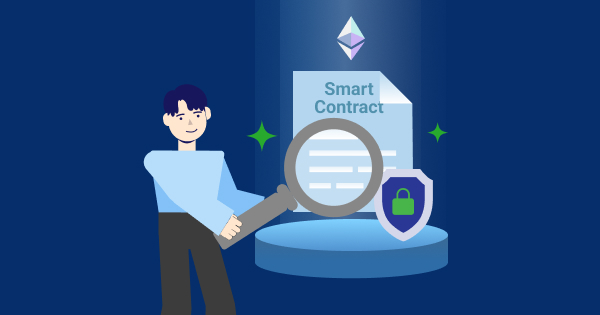Introduction
Smart contracts have emerged as one of the most revolutionary applications of blockchain technology, enabling automated and trustless execution of agreements between parties. These self-executing contracts, where the terms of the agreement are written into lines of code, eliminate the need for intermediaries and have the potential to streamline processes across various industries, from finance and insurance to supply chain management and legal agreements.
However, despite the immense potential of smart contracts, their adoption raises significant concerns regarding security, particularly in relation to vulnerabilities and errors in the contract code. Given that smart contracts are immutable once deployed on the blockchain, any errors or vulnerabilities can lead to serious consequences, including financial losses, data manipulation, or even system exploitation. Therefore, ensuring the security of smart contracts is crucial for their widespread adoption and use in real-world applications.
This article will explore how the security of smart contracts is ensured, the common vulnerabilities and errors that developers need to watch for, and the methods and tools that are used to safeguard these contracts from malicious exploits.
1. What Are Smart Contracts?
Before diving into the security measures, let’s first define what smart contracts are and how they work.
1.1 Definition of Smart Contracts
A smart contract is a self-executing contract with the terms of the agreement directly written into lines of computer code. These contracts run on decentralized blockchain platforms, such as Ethereum, where they are triggered by specific conditions and execute automatically when those conditions are met.
- Example: In a simple transaction, if party A sends cryptocurrency to party B, the smart contract automatically executes when the conditions (payment received) are met, transferring ownership of the asset or completing the transaction.
Smart contracts are often considered to be “immutable” once deployed, meaning that the code cannot be changed or tampered with, thus providing security and reliability for all participants.
1.2 Features of Smart Contracts
Some of the key characteristics of smart contracts are:
- Autonomous Execution: Once deployed, smart contracts execute automatically based on the conditions coded into them.
- Transparency: Since they run on a public blockchain, all participants can inspect and verify the code.
- Immutability: Once a smart contract is deployed to the blockchain, it cannot be modified or deleted without consensus from the network.
- Security: Smart contracts use cryptographic techniques to ensure that transactions are secure and tamper-proof.
While these features make smart contracts highly beneficial, they also present certain risks, especially when it comes to vulnerabilities in the code.
2. Common Vulnerabilities and Errors in Smart Contracts
Despite their promise, smart contracts are not immune to mistakes or vulnerabilities. Understanding the common vulnerabilities and errors that occur in smart contracts is essential for ensuring their security.
2.1 Reentrancy Attacks
A reentrancy attack occurs when a smart contract makes an external call to another contract, and that contract calls back into the original contract before the first execution is complete. This can lead to unexpected behavior, such as draining funds from the contract.
- Example: The infamous DAO hack on the Ethereum network was a result of a reentrancy attack. The attacker exploited a vulnerability in the DAO’s smart contract to repeatedly withdraw funds before the contract’s balance was updated.
2.2 Integer Overflow and Underflow
Integer overflow and underflow vulnerabilities occur when arithmetic operations in a smart contract result in numbers that exceed the maximum (overflow) or minimum (underflow) value that can be stored in the contract’s variable.
- Example: If an operation causes a contract to store a value that exceeds the system’s maximum value for an integer, it may lead to unintended behavior, such as incorrect balances or logic errors.
2.3 Gas Limit and Block Limit Attacks
In blockchain networks like Ethereum, transactions require “gas” for execution. The gas limit determines how much gas is available for executing a transaction, while the block limit restricts how much gas can be used in a single block. If a smart contract is poorly designed, an attacker can exploit these limits to cause the contract to run out of gas, leading to transaction failure or denial of service.
- Example: A poorly written contract may accidentally consume too much gas, preventing legitimate transactions from completing or allowing an attacker to cause disruption by consuming all available gas.
2.4 Front-running Attacks
Front-running is a type of attack where a malicious actor intercepts a transaction before it is executed to take advantage of a change in price or a market opportunity.
- Example: In decentralized exchanges (DEXs), an attacker could monitor pending transactions and submit a higher gas fee for their own transaction, allowing them to execute their trades before the original transaction is finalized, potentially causing a loss to the original party.
2.5 Poor Randomness Generation
Some smart contracts require randomness for certain functions, such as generating lottery numbers or random selections. However, blockchain platforms like Ethereum are not designed to generate true randomness, and improper methods of generating random numbers can introduce vulnerabilities.
- Example: If a contract uses block hashes, timestamps, or other predictable values for randomness, it could be manipulated by an attacker who controls the environment or the data.
2.6 Access Control Vulnerabilities
Smart contracts often require some form of access control to restrict which users can execute certain functions. Improper access control can allow unauthorized users to interact with the contract in ways that were not intended.
- Example: A contract may have a function that only the contract owner should be able to call. However, if the code does not properly enforce this restriction, an attacker could perform actions such as transferring funds or changing important settings.
3. How Smart Contracts Ensure Security
There are several best practices and security measures that developers and the blockchain community employ to safeguard smart contracts from vulnerabilities and errors.
3.1 Formal Verification
Formal verification is the process of mathematically proving that a smart contract’s code behaves as expected. This is done by specifying the contract’s expected behavior and using formal methods to verify that the contract’s code meets those specifications.
- Impact: Formal verification can help detect bugs, errors, and vulnerabilities in the contract before deployment, providing a high level of assurance that the contract will function securely.
3.2 Code Audits and Security Reviews
Code auditing is one of the most common practices for ensuring the security of smart contracts. Auditors review the contract’s code to identify any vulnerabilities, bugs, or logic flaws. Several companies and organizations specialize in security audits of smart contracts, ensuring that they are free from common vulnerabilities.
- Impact: Conducting code audits before deploying a smart contract is a crucial step to ensure that it is safe from exploitation. Auditing tools such as MythX, Slither, and Oyente can also help automate the detection of potential vulnerabilities.
3.3 Use of Established Frameworks and Libraries
Rather than writing smart contract code from scratch, developers often rely on well-tested and trusted frameworks and libraries such as OpenZeppelin or Truffle. These libraries contain pre-audited code that is commonly used in smart contracts, reducing the likelihood of introducing security vulnerabilities.
- Impact: Using well-established libraries ensures that the contract code is built upon a solid foundation that has been extensively tested and reviewed by the community.

3.4 Gas Optimization
Optimizing the gas usage of a smart contract can prevent denial of service attacks related to gas consumption. Developers can optimize their contracts to make sure they are efficient in terms of computation and gas usage, thereby reducing the risk of exploitation.
- Impact: By carefully optimizing gas usage, developers ensure that contracts are not vulnerable to being overwhelmed by malicious actors attempting to exhaust gas resources.
3.5 Limiting Access and Role-Based Permissions
Implementing role-based access control (RBAC) and permissions is essential for ensuring that only authorized individuals or entities can interact with certain functions of a smart contract.
- Impact: By properly setting permissions and restricting access to sensitive functions (e.g., fund transfers or admin-level actions), smart contracts can prevent unauthorized users from gaining control.
3.6 Use of Oracles for Secure Randomness
To generate secure randomness in smart contracts, developers can use oracles. Oracles are trusted external services that provide real-world data to smart contracts, including secure random number generation.
- Impact: By using trusted oracles like Chainlink, developers can ensure that random number generation is unpredictable and resistant to manipulation.
4. Tools and Techniques for Smart Contract Security
There are various tools and platforms that developers use to enhance the security of smart contracts:
- MythX: A security analysis platform that offers deep static analysis and detects vulnerabilities in smart contracts.
- Slither: A static analysis tool that helps identify common vulnerabilities in Solidity smart contracts.
- Oyente: A security analyzer for Ethereum smart contracts that performs symbolic execution to detect potential vulnerabilities.
- Truffle: A development framework for Ethereum smart contracts that includes built-in testing and security features.
- OpenZeppelin: A library of pre-tested, reusable smart contract components that provide built-in security features for common patterns.
Conclusion
Smart contracts have the potential to revolutionize industries by enabling automated, trustless transactions. However, ensuring their security is paramount, as vulnerabilities and errors in smart contracts can lead to significant financial and reputational damage. By understanding the common risks, implementing best practices like formal verification, code auditing, gas optimization, and using trusted libraries and frameworks, developers can mitigate the chances of vulnerabilities being exploited.
As blockchain and smart contract technology continues to evolve, security measures and tools will become more sophisticated, ensuring that smart contracts remain a safe, reliable, and scalable solution for a wide range of applications.
















































